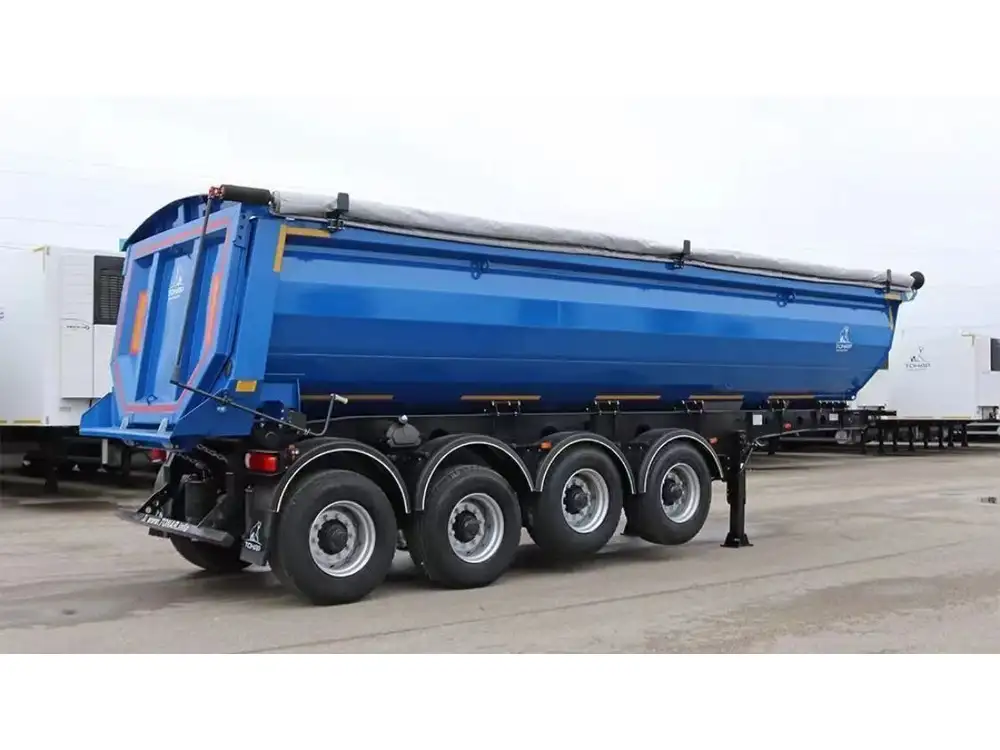When it comes to transporting vehicles, particularly small cars, many logistics professionals and DIY enthusiasts alike have found themselves pondering the capabilities of tandem axle trailers. Understanding these trailers’ design, capacity, and legal compliance is essential for effective transport solutions. In this comprehensive analysis, we delve into various factors, including weight distribution, trailer specifications, and safety measures, to answer whether a tandem axle trailer can effectively carry a small car.
Understanding Tandem Axle Trailers: An Overview
What is a Tandem Axle Trailer?
A tandem axle trailer features two axles situated close together, commonly designed to distribute loads over a larger area. This design attribute offers several benefits, including improved load stability, enhanced weight capacity, and better maneuverability. Such trailers are widely used in various applications, including construction, agriculture, and vehicle transportation.

Benefits of Tandem Axle Trailers
- Increased Stability: The two-axle configuration provides better support for the load, reducing the risk of swaying during transportation.
- Higher Weight Capacity: Due to their robust construction, tandem axle trailers typically can handle heavier loads than single axle trailers.
- Improved Maneuverability: The distribution of weight allows for smoother turning and handling, beneficial when navigating tight spaces.
Common Uses
Tandem axle trailers are frequently employed in various sectors, including:
- Automotive Transport: Ideal for transporting cars, including small vehicles.
- Construction: Moving heavy equipment and materials to job sites.
- Agricultural Operations: Hauling equipment, livestock, and more.
Assessing Load Capacity: Can You Haul a Small Car?

Calculating Load Capacity
To determine if a tandem axle trailer can successfully carry a small car, one must consider several key parameters:
Weight of the Small Car:
- Small cars typically weigh between 2,000 to 3,000 pounds.
Tandem Axle Trailer Specs:
- Axle Ratings: Tandem axle trailers often have an aggregate axle rating, typically ranging from 7,000 to 14,000 pounds, depending on construction and design.
- Gross Vehicle Weight Rating (GVWR): This indicates the maximum permissible weight of the trailer combined with the load it carries.
Example Calculation:
If we have a tandem axle trailer with a GVWR of 10,000 pounds, and the small car weighs 2,500 pounds, the total weight would be within the limits of most tandem axle trailers.
| Specification | Weight (lbs) |
|---|---|
| Small Car | 2,500 |
| Trailer’s Own Weight | 3,000 (typical) |
| Total Load | 5,500 |
This calculation shows that a tandem axle trailer is quite capable of transporting a small car, leaving sufficient margin for other necessary gear or accessories.
Load Distribution: Importance of Proper Weight Management

Distributing Weight Correctly
Proper weight distribution is pivotal to safely transporting a small car on a tandem axle trailer. Inadequate distribution can lead to trailer instability and increased wear on both the vehicle and the trailer:
- Front-to-Rear Distribution: Aim for a balanced load, with approximately 60% of the weight at the front and 40% at the rear.
- Side-to-Side Distribution: Ensure the weight is evenly distributed across the width of the trailer to prevent tipping.
Securing the Load
When transporting a small car, it is essential to secure the vehicle properly to minimize movement during transit. This includes:
- Using Tie-Down Straps: High-quality, heavy-duty straps should be used to securely attach the car to the trailer.
- Wheel Chocks: Placing wheel chocks ensures the vehicle does not roll, providing additional security during movement.
Safety Regulations and Compliance

Legal Considerations
When transporting vehicles, it’s essential to adhere to local laws and regulations regarding trailer use:
- Weight Limits: Check local Department of Transportation (DOT) weight limits for trailers.
- Braking Systems: Some jurisdictions require trailers over a certain weight to have electric brakes.
- Lighting and Visibility: Ensure all lighting functions properly (brake lights, turn signals) for safe travel.
Insurance and Liability
Before transporting a car, review insurance coverage. It’s advisable to:
- Consult Your Provider: Verify that your vehicle and trailer are covered during transport.
- Understand Liability: Know who is responsible in case of damages during transport.
Advantages of Using Tandem Axle Trailers for Car Transport

Versatility
Beyond carrying small cars, tandem axle trailers can adapt to transport other loads, including motorcycles, ATVs, and small boats. This versatility makes them a great investment for anyone frequently involved in vehicle transport.
Durability
Built with robust materials, tandem axle trailers are engineered to withstand the rigors of heavy use, providing longevity and reliability that makes them an attractive option for manufacturers and end-users alike.
Cost-Effectiveness
While the initial investment may be higher relative to single axle models, the durability, capacity, and versatility of tandem axle trailers often result in lower total ownership costs over time.

Conclusion: Are You Ready to Utilize a Tandem Axle Trailer for Your Small Car?
With their stability, enhanced weight capacity, and versatility, tandem axle trailers are perfectly suited for transporting small cars. Upon evaluating load capacity, secure transport practices, and adherence to safety regulations, you can be confident in utilizing such trailers for your automotive needs.
Key Takeaways
- Ensure the trailer’s GVWR can accommodate the small car’s weight.
- Maintain proper load distribution to ensure stability during transport.
- Adhere to safety regulations and ensure necessary insurance coverage.
Next Steps
For those looking to transport a small car with a tandem axle trailer, it’s essential to conduct thorough research and possibly consult with a professional to guarantee safety and compliance.
With a strategic approach to using tandem axle trailers, your vehicle transport needs are not just met; they are exceeded—making it a wise choice for consumers looking to optimize their logistics.



